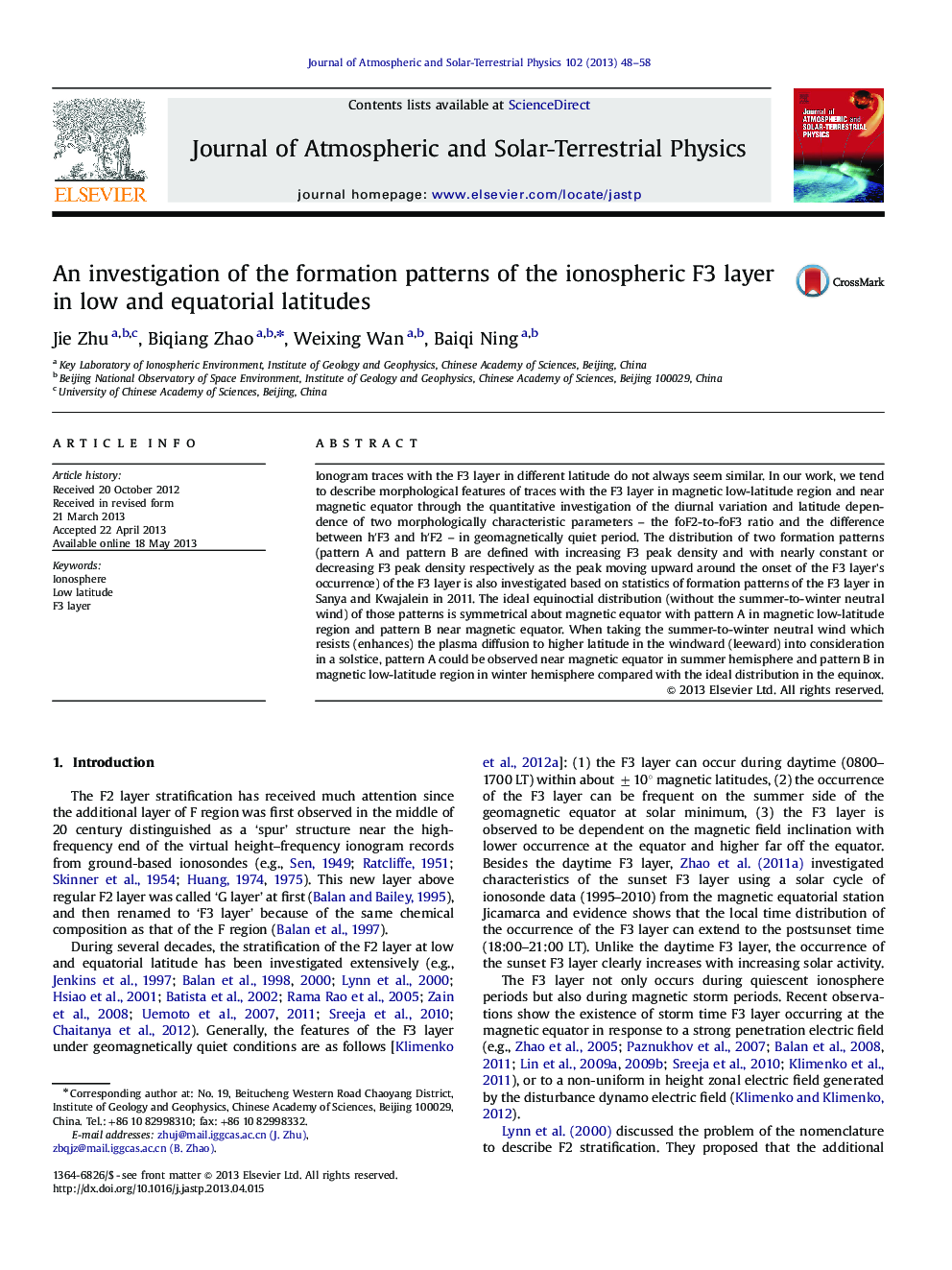| Article ID | Journal | Published Year | Pages | File Type |
|---|---|---|---|---|
| 8140553 | Journal of Atmospheric and Solar-Terrestrial Physics | 2013 | 11 Pages |
Abstract
Ionogram traces with the F3 layer in different latitude do not always seem similar. In our work, we tend to describe morphological features of traces with the F3 layer in magnetic low-latitude region and near magnetic equator through the quantitative investigation of the diurnal variation and latitude dependence of two morphologically characteristic parameters - the foF2-to-foF3 ratio and the difference between hâ²F3 and hâ²F2 - in geomagnetically quiet period. The distribution of two formation patterns (pattern A and pattern B are defined with increasing F3 peak density and with nearly constant or decreasing F3 peak density respectively as the peak moving upward around the onset of the F3 layer's occurrence) of the F3 layer is also investigated based on statistics of formation patterns of the F3 layer in Sanya and Kwajalein in 2011. The ideal equinoctial distribution (without the summer-to-winter neutral wind) of those patterns is symmetrical about magnetic equator with pattern A in magnetic low-latitude region and pattern B near magnetic equator. When taking the summer-to-winter neutral wind which resists (enhances) the plasma diffusion to higher latitude in the windward (leeward) into consideration in a solstice, pattern A could be observed near magnetic equator in summer hemisphere and pattern B in magnetic low-latitude region in winter hemisphere compared with the ideal distribution in the equinox.
Keywords
Related Topics
Physical Sciences and Engineering
Earth and Planetary Sciences
Geophysics
Authors
Jie Zhu, Biqiang Zhao, Weixing Wan, Baiqi Ning,
